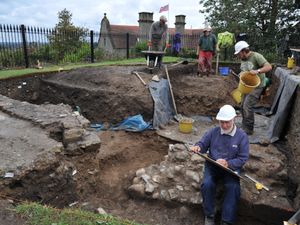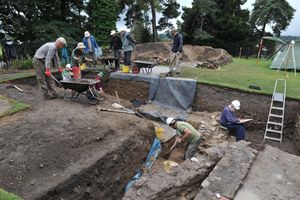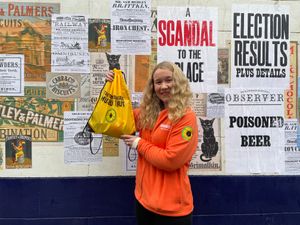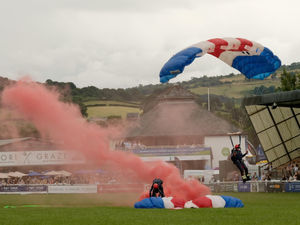Dig uncovers the past at Oswestry Castle
A section of medieval castle has emerged from a dig being carried out in Oswestry.

Archaeologists had known that a three-storey keep had sat on top of the castle which dominated the town overlooking the Bailey Head area.
Over the last couple of weeks they have discovered more about a second building that sat on the east side of the motte.
A team of professional archaeologists, expert amateurs and students from Chester University are working on the large trench that had been dug there.
Site director, Mr Roger Cooper, said the work was started to examine further the unexpected wall exposed in September 2017.

"We have discovered that there was a substantial building on the east side. It is definitely medieval and had an outer wall, probably defensive, and an internal wall.
"That had an inner lime plaster and was therefore probably domestic, although that could mean anything from a chapel to a kitchen."
Mr Cooper said that because the mound was used by the Victorians as a pleasure garden, there was a lot of disturbance to the ancient monument.
"It is now a metre-and-a-half higher than it would have been in medieval times," he said.
The work is part of the Oswestry Castle Research Project, which is working with a grant from the Heritage Lottery Fund.
"Because the castle is a scheduled monument we also have to have a licence from Historic England, who are very supportive," said Mr Cooper, who added that the project also had excellent support from Oswestry Town Council.
He said that the project had commissioned a painting by Oswestry artist John Swogger of how the keep would have looked in the 12th Century.
"As well as our detailed reports we also plan to create new information plaques, for the entrance at the bottom of the Castle and at the top."
People are welcome to walk up to the top of the castle to see the excavation site.
"We have had about 30 visitors a day," Mr Cooper said.





